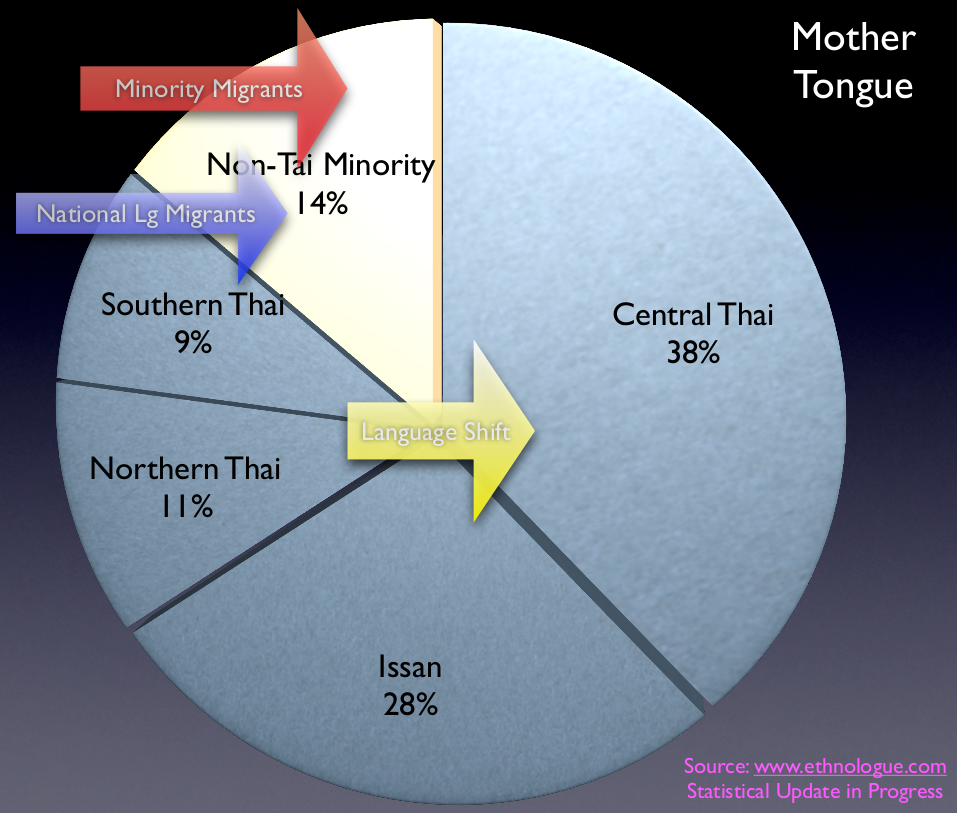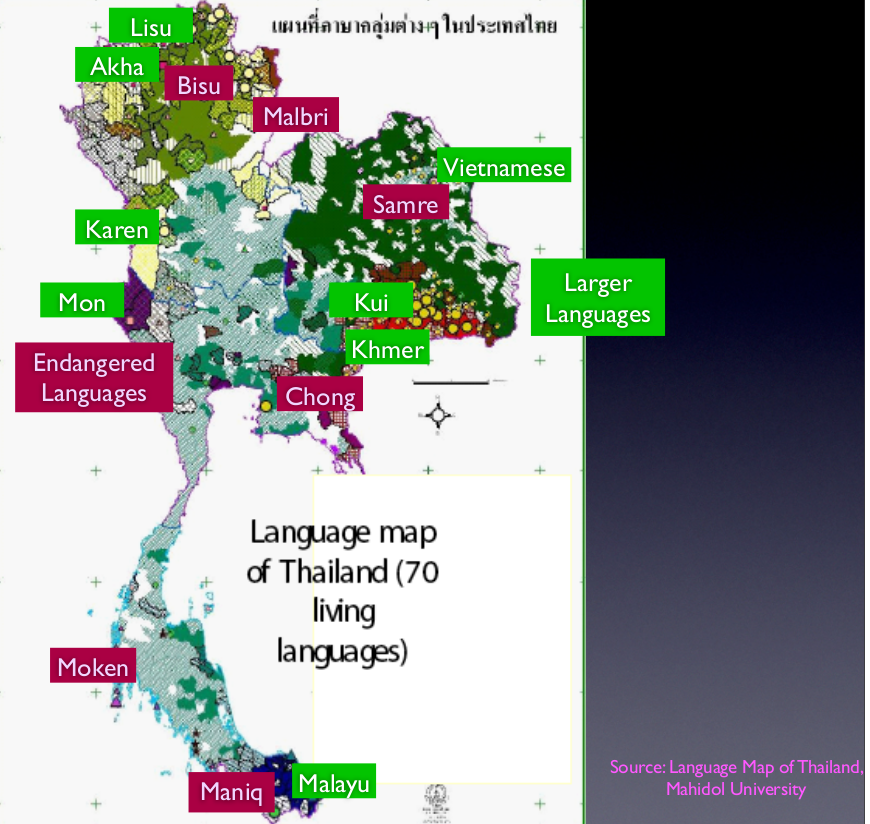Updated 28-Jun-2024
Thai languages, or languages in Thailand, are many and diverse. Scholars generally use the term Tai to refer to a larger language family which ranges across much of Mainland Southeast Asia and what is now Southern China. The main point is that there is ongoing research, different ideas, and not full agreement, on how to distinguish which languages are related to each other and which are siblings and which are parent languages.

Languages vs. Dialects
There is not a clear distinction where a dialect ends and a language begins. Presumably dialects are regional pronunciations and special local terms, whereas languages have much more of a difference which can result in mutual unintelligibility (the speaker of one language cannot understand the speaker of another language). Speakers of a language can grow apart, and their language then grows apart, resulting in two or more languages.
Languages can also come together over time, such that a separate language starts to become mutually intelligible, where before it was not. And finally, many societies have multiple languages in use, and so intelligibility comes from close physical proximity of the languages and the speakers in the local area.
What usually happens in this case is that one language which is not a local language, and not the mother tongue of a majority of the inhabitants, is priviledged as a language of education or the economy.

Thai Language, Tai Languges, &c.
In Thailand as functional mother tongues there are dozens and possibly hundreds of linguistic communities. Setting aside the many minority languages for example of immigrants and hill tribes, there are five predominant languages which number in the million or more speakers, those are:
- Kham Muang / Lanna / Northern Thai - spoken in parts of Northern Thailand, Western Laos and Northeastern Myanmar
- Isan / Lao / Northeastern Thai - there are six (or more) dialects of Lao and each of them is spoken in Isan, hence the Isan language is simply the Lao language, spoken in Northeastern Thailand
- Standard Thai / Central Thai / Siamese / Thai
- Southern / Dambro / Southern Thai - Phasa Dai ภาษาใต้
- Yawi / Pattani Malay - Phasa Yawi ภาษายาวี
- Northern Khmer / Surin Khmer - Phasa Khmer ภาษาเขมร
This rough diagram of the various spheres of influence of various kingdoms from ~1400 CE indicates how the linguistic cultures were set by then. Nonetheless, minority languages abound and a given kingdom's border is more or less then operating area for a primary language, rather than the erasure of minority languages. The borders of those kingdoms are still very much present in the mother tongue of the populations in different parts of Thailand. But again, the nation state of Thailand itself with Central Thai is still a minority language in terms of first language use.

How to Understand the Relations between Thai Languages
There are different ways of relating these languages to each other, but present scholarship is best understood as making the modern languages siblings at most, and unrelated languages most likely. It is common to hear each of these languages (with the exception of Malay) as being Thai, Thai Languages or Dialects of the Thai Language. Certainly they are languages spoken in Thailand, and have been for generations.
However, it is not accurate or useful to refer to these languages a part of a single language. Beyond the fact that these are generally mutually unintelligible, they also have very different histories and play a different function in the societies in which they live. Each is a mother tongue for a significant population, whereas Central Thai / Siamese is the national/government language. All languages except for Central Thai have been largely supressed as part of a nationalist Thaification policy which began in the 1940s and is operating up through the present.
